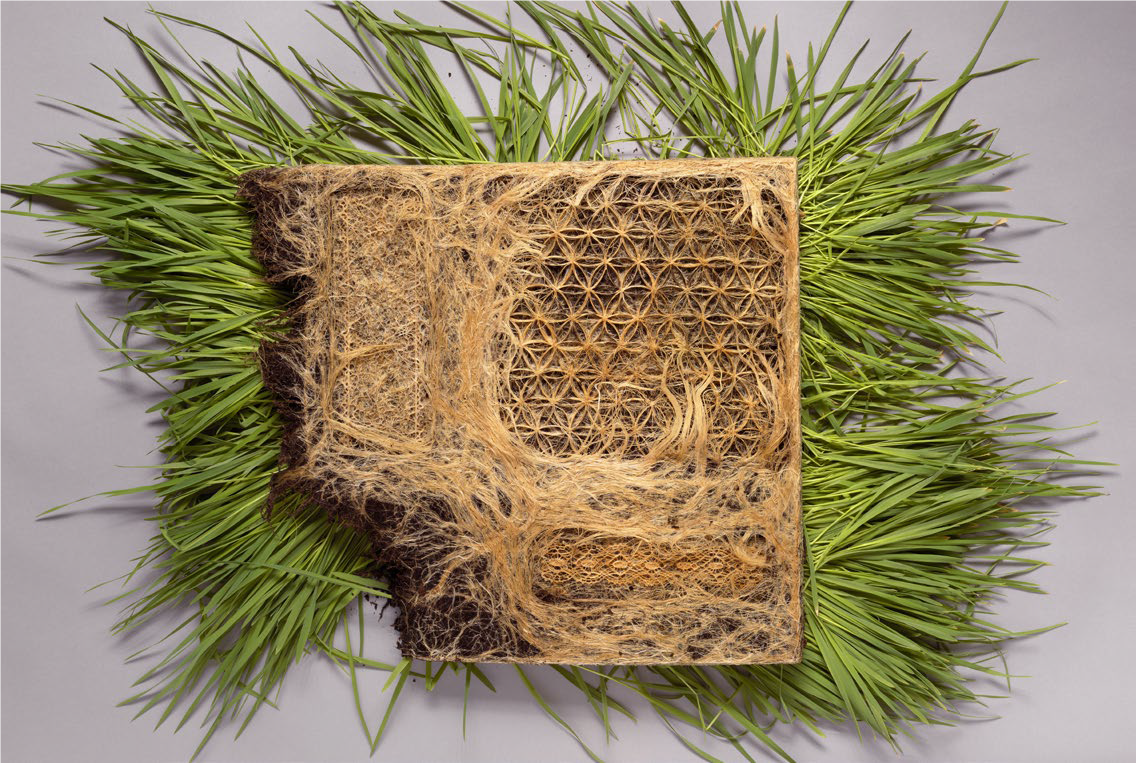Ordinary mortals won’t bother their heads with the construction of a root. But for root researchers like Liesje Mommer, personal professor of Plant Ecology and Nature Management, the principles of root growth are crucial.
‘Above the ground, things are clear to us. We have a pretty good understanding of why some leaves are thick and others thin, why they grow fast or slowly, and why they contain a lot of nitrogen or not much,’ explains Mommer. The construction principle is ‘fast versus slow’. Thin, fast-growing leaves that don’t use much carbon die quickly. Thick leaves that use a lot of carbon are longer-lived. A measure of the rate of growth is the amount of nitrogen. Nitrogen is an indicator of the presence of rubisco, the main protein in photosynthesis.
With a lot of nitrogen, the plant can convert a lot of CO2 into sugars, and can therefore grow fast. That nitrogen has to be supplied by the roots. It has long been assumed that fast-growing leaves require a fast-growing root. ‘Numerous studies have tried to prove that,’ says Mommer, ‘but they couldn’t do so. The surface per gram of leaf didn’t actually correlate with the length per gram of root. No one understood that.’
Underground dimensions
So there had to be more to this than the principle of ‘fast versus slow’. ‘Leaves “only” have to capture CO2 and light,’ says Mommer. ‘But there are many more dimensions at work underground. A root has to store not only the easily absorbed nitrogen, but also the strongly soil-bound phosphorus, 12 other essential nutrients, and water.’ A root is also affected by the density of the soil. Thin roots cannot easily penetrate dense soils. And, not unimportantly, roots are a habitat for many microorganisms that can interfere with all those nutrients for the plant. It is precisely the latter element, and the collaboration with mycorrhiza fungi in particular, that now turns out to be the most important factor in explaining root structure. Mommers’ colleague Thom Kuyper, personal professor of Soil Biology, tried to prove this some years ago – in vain. ‘At that time I focused too much on roots in temperate zones,’ he recollects. ‘Then you see too limited a range of root variation in nature and that puts you on the wrong track.’
Architect
Together with Alexandra Weigelt of Germany (and with German funding), Mommer assembled a diverse team of 20 researchers to solve the riddle of root construction. Along with plant ecologist Jasper van Ruijven, Kuyper was a prominent member of the group. In fact, Mommer says, ‘Thom was the architect of the idea that cooperation was the guiding principle we were looking for.’ Kuyper tones this down: ‘I’m honoured to hear that, but I don’t think I would ever have thought up and proven the concept on my own.’
A better understanding of roots could play a role in making farming systems more productive
Either way, Kuypers’ summary of everybody’s ideas, and especially the introduction of the term ‘outsourcing’ caused quite a stir at the first workshop. And then everything suddenly fell into place.
Roots can absorb important nutrients themselves, or they can outsource that job to symbiotic fungi (mycorrhiza). So is the decisive construction principle for plant roots ‘do-it-yourself as opposed to outsourcing’? The group refined that theoretical concept, in which root characteristics such as diameter, length per gram, tissue density and nitrogen content play decisive roles.
The data crunchers in the team then set to work to reveal underlying relations, using root data from 1800 different species of plants that between them represented the large variety of climates and soil types around the world.
‘Within an hour, the people doing the calculations were heard saying, “Yes, it’s right”,’ Mommers recalls. Between them, the two construction principles explained 77 per cent of the root variation in nature, with the principle of ‘do-it-yourself versus outsourcing’ in the lead role.
Good mix
Mommer speculates about possible applications of this fundamental concept. ‘A better understanding of roots could play a role in making farming systems more productive. We know that more biodiversity leads to higher production. Why is that? One of the ideas is that it has to do with the root strategy. Perhaps there needs to be a good mix of do-it-yourselfers and outsourcers. That might apply to strip cropping as well. Undeniably, mycorrhiza play a big role, and we don’t fully understand that role yet.’
What counts most for Kuyper is the simple ‘pleasure of understanding’. ‘Having an explanation for 77 per cent of the variation is a lot in biology,’ says Kuyper. ‘There are about 300,000 species of plants. It is pleasing that nearly all the diversity can be explained with two construction principles. It gives you a kind of deep philosophical feeling that there is order in the world. There is an aesthetic value in the fact that you can understand nature with a couple of simple principles.’

 Photo: Diana Scherer
Photo: Diana Scherer 

